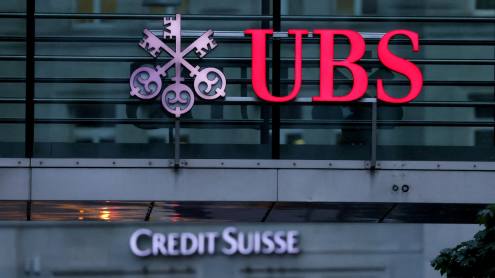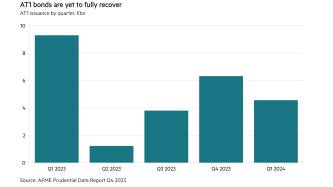It is crunch time for Danske Bank, the largest bank in Denmark and one of the largest in the Nordic region, which posted a 33% increase in net profits to DKr12.8bn (€1.7bn) in 2005. As Easter approaches, the 135-year-old bank is gearing up for the big bang IT integration of the two Irish banks it bought early last year, a test of the bank’s first major step outside Scandinavia.
Northern Bank, based in Northern Ireland with a market share of about 20%, and National Irish Bank, based in the Irish Republic with about 4% market share, were bought from National Australia Bank last year, which had failed to invest in them as it concentrated on its home and UK operations.
“The [Irish] brands are not presently strong,” admits Peter Staarup, chief executive officer, in an interview in the bank’s Copenhagen headquarters. “We have the skills and platform to make them strong: our approach to customer relationship management and service, the efficiency with which we put customers [first], our selection of products. But this is not a walkover, there will be intense competition.”
The Republic of Ireland has been one of the best performing economies in Europe, with mortgages and domestic credit growing strongly and a pick-up in small and medium-sized enterprise lending. It represents a departure for Danske Bank, which hitherto had expanded mainly in the retail markets of Sweden and Norway.
Drive for market share
“It is attractive to be in a market with inherent growth so you do not have to steal all your customers,” says Mr Staarup. His aim is to grow with the market and take some market share. In Sweden, for instance, where it entered the market in 1997, the bank’s market share has increased from about 1% to about 5%. Through the opening of new branches as other banks pull back, plus its customer service approach, it is targeting an ambitious 10% market share. The bank is 10 times larger than it was in 1997.
Danske is also planning to open new branches in Ireland, once the IT conversion is achieved, but has not yet decided how many, or where, although the south-east of the Republic of Ireland is an area of interest.
This is all part of Danske’s bid to lessen its dependence on the Danish market, where it has about a 35% market share in retail and 50% in wholesale. (The latter is due to historical reasons; it has been withdrawing from an emphasis on lending to major corporates abroad by, for instance, selling its New York and London corporate loan portfolios in 2005.)
Foreign revenues account for 20% of total revenues. This is the area where Mr Staarup foresees major growth, through current and future acquisitions.
Cross-border integration
From the beginning of the year, Danske has been running the four systems of the Irish banks and the group’s system in parallel. So far it has gone according to plan, says Mr Staarup, pointing out that the bank’s model – sharp technology systems integration – worked for prior acquisition experiences. All the core banking operations in every country where it is present are on its multilingual, multibrand and multi-currency platform.
The IT integration model includes a massive training programme. In this case, 450 employees of the Irish operations have been in Denmark for training. Additionally, 350 Scandinavian staff will be sent to Ireland at Easter in preparation for the big bang. They will be distributed among the branches so that every branch has at least one expert, and will stay for about two weeks.
Mr Staarup is aiming to lower the bank’s cost/income ratio from 51.5% to less than 50% through more straight-through processing and increased cross-selling. Meanwhile, its record profits are expected to offset margin pressure and ensure its capitalisation ratio, which fell below its 6.5% to 7% Tier 1 capital target on the back of the Irish acquisitions, will recover.
In any case, the Basel II regime should free up some capital due to the bank’s exposure to mortgages and retail banking.
Despite not being in the top 25 banks in the world by market capitalisation, Mr Staarup believes the bank will not be swallowed up: “If we do our job right, we are convinced Danske Bank can remain independent.”
Henrik Schmidt, an analyst at independent research firm KBW, agrees: “It is extremely cost efficient, with a very strong IT platform which allows it to make acquisitions, and a very strong management team. In the medium term, it is likely to be an acquirer rather than be acquired.”
The trial will be over Easter. If successful, Danske Bank will undoubtedly be lining up its next foreign target.











